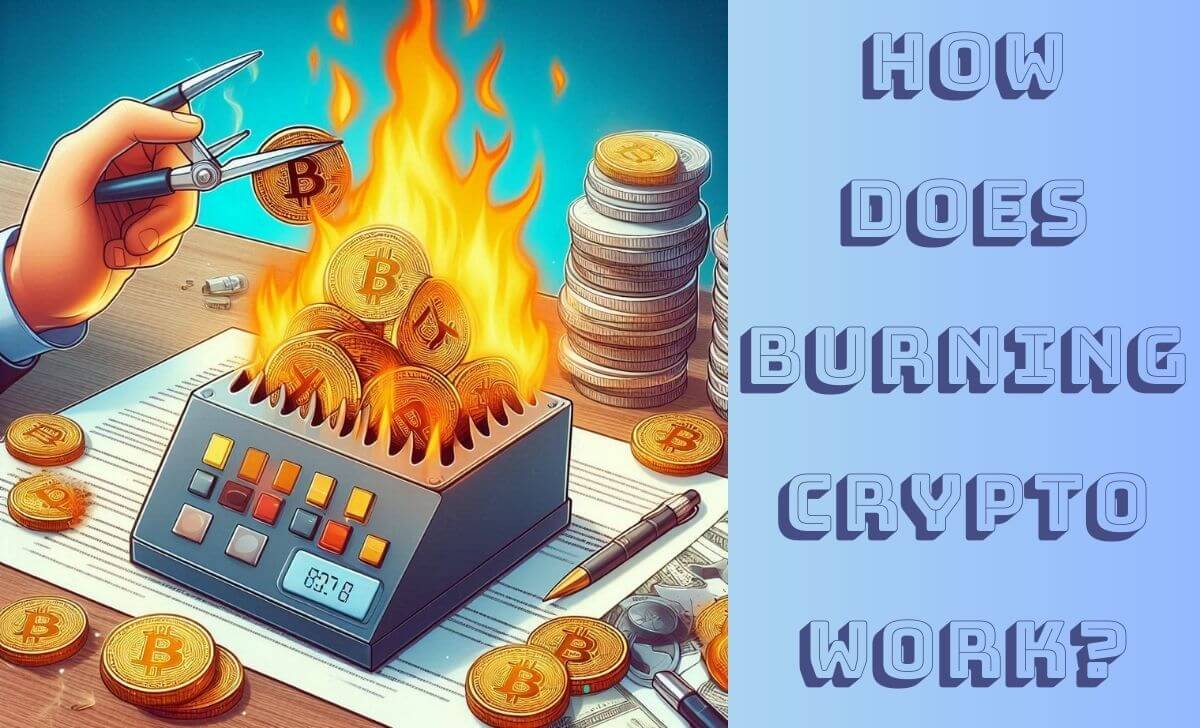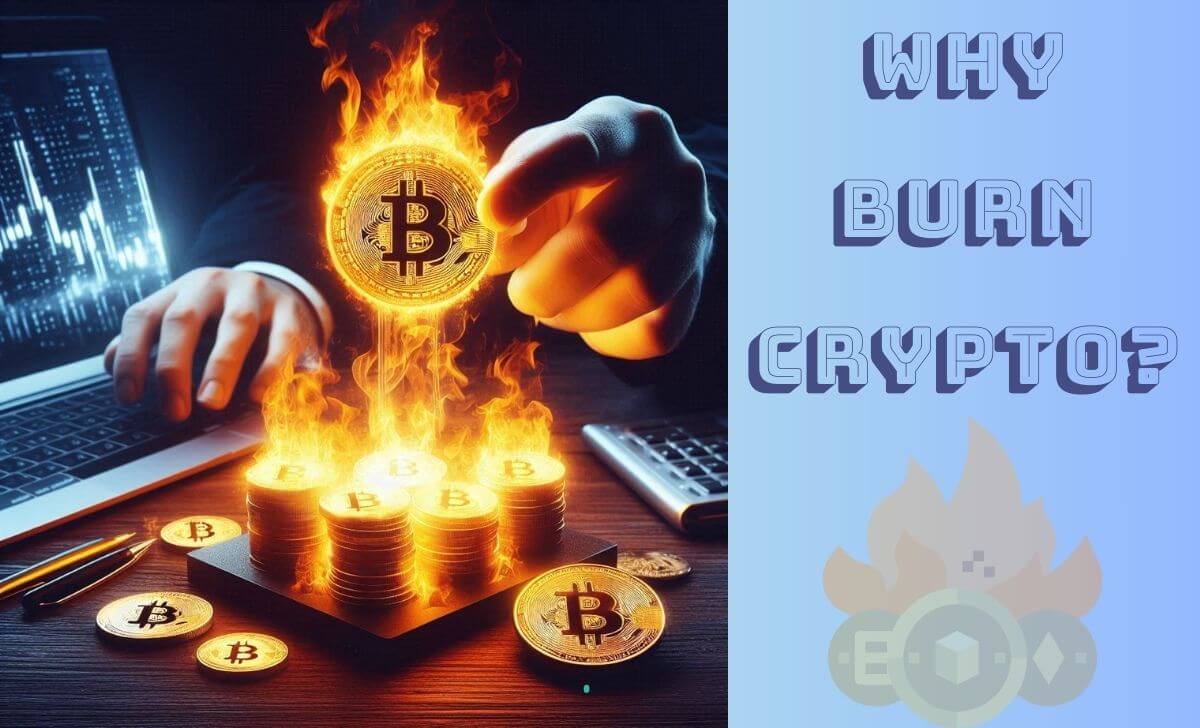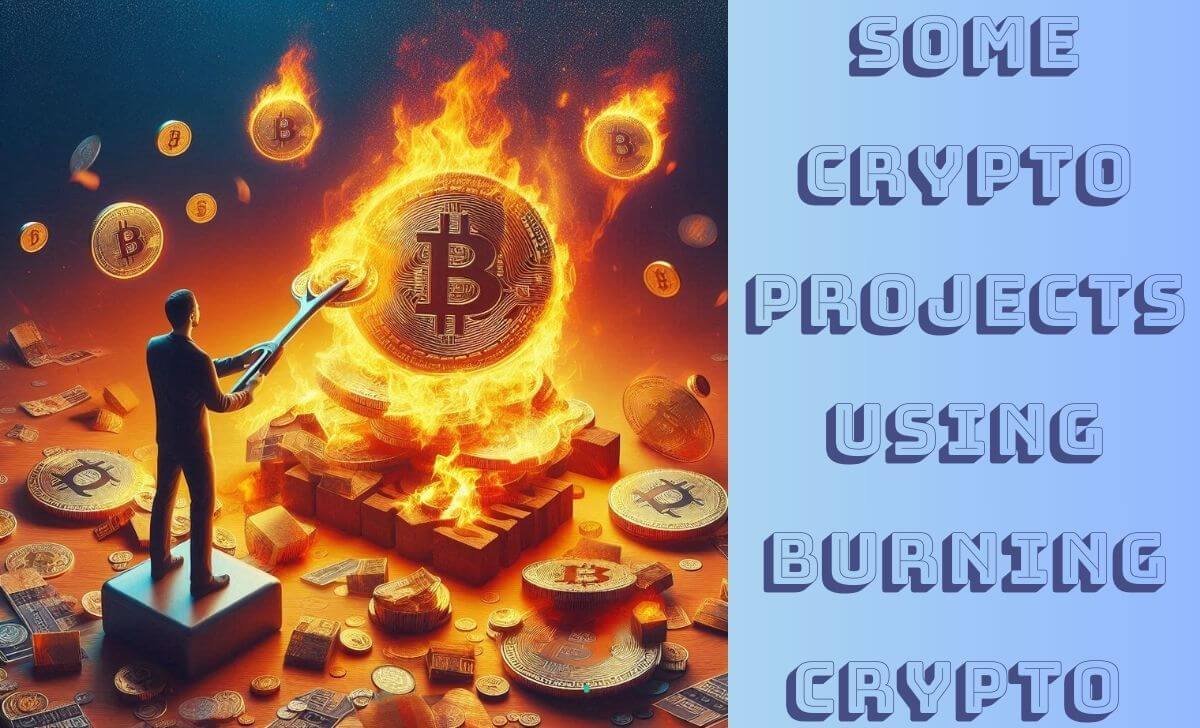Burning crypto is a familiar term in the cryptocurrency community, used to refer to the act of destroying a certain amount of cryptocurrency to reduce its total supply.
Please follow the article below by AZCoin to better understand the concept and factors related to burning crypto.
What does Burning crypto mean?

Burning crypto, also known as coin burning, is the process of reducing the number of cryptocurrencies in circulation by transferring them to an unreachable wallet address. These coins will never be used again, reducing the supply of the currency and affecting the value of that coin on the market. Burning crypto helps regulate the number of coins available, thereby affecting their value and distribution.
How does Burning crypto work?

The process of burning crypto begins with sending a certain amount of coins to a burn wallet address, which no one can access or retrieve. In the blockchain system, when coins are sent to this address, they no longer appear in the network transaction list or ledger.
When a project announces coin burning, this information is usually made public on official websites, social media or through blockchain tracking tools. This information helps users and investors confirm that the burning has been done and the amount of coins burned is correct. Burning crypto can be done periodically, on a schedule or based on specific conditions, depending on the strategy of each project.
Typical Forms of Burning Crypto
Below are some typical forms of Burning crypto:
- Buyback and Burn: Some projects will use revenue or profits to buy back tokens on the market and then burn them.
- Burn a portion of transaction fees: Some coins like Ethereum and Solana have a mechanism to burn a portion of transaction fees, reducing the overall supply.
- Regular burns: Some coins have a mechanism to periodically burn a certain amount of coins like Binance Coin of Binance.
Why burn crypto?

Burning crypto serves several purposes in the cryptocurrency ecosystem:
- Increase Value: Reducing the supply of a coin can increase its value, as scarcity drives demand and makes the coin more valuable. As the total supply of a coin decreases, if demand remains stable or increases, the value of the coin can increase accordingly.
- Controlling Inflation: For cryptocurrencies with a fixed supply or a plan to gradually reduce their supply, burning crypto is a way to control inflation and maintain the value of the coin. This helps prevent the coin from losing value due to an increase in oversupply.
- Encouraging Investment: Some projects use coin burning as a tool to incentivize users and investors by increasing the value of the coin they are holding. When investors see that their coin can increase in value thanks to burning, they may feel more confident in investing and holding the coin.
- Building Trust: Burning crypto can help increase community trust in a cryptocurrency project. When a project publicly announces burning and shows that it’s taking measures to maintain the value of the coin, it can build trust and support from the community and investors.
Does Burning crypto affect coin prices?
Burning crypto often has a positive effect on coin prices, as reducing the supply of a coin can lead to an increase in the value of the remaining coins. However, this effect is not always obvious or immediate.
The change in value can depend on many other factors such as the overall market situation, user demand and other macroeconomic factors. If the market is in a bear market or there are other adverse factors, coin burning mayn’t an immediate positive effect. However, in stable or growing market conditions, Burning crypto can help increase the value of the coin.
Some crypto projects using Burning crypto mechanism today

Many cryptocurrency projects today use Burning crypto as part of their strategy to manage supply and create value. Below are some notable projects:
Ethereum (ETH)
Ethereum has implemented burning crypto through the EIP-1559 mechanism, which was introduced in August 2021. Under this mechanism, a portion of the transaction fees in the Ethereum network, including those involving ERC-20 tokens, is burned. According to information from Ethereum, more than 2 million ETH have been burned to date, reducing the total supply of ETH and creating scarcity in the network.
Binance Coin (BNB)
Binance periodically burns BNB in quarterly Burning crypto. Binance has burned a total of more than 2 million BNB in coin burning since 2017. This coin burning is to reduce the total supply of BNB and increase its value. Binance plans to continue burning BNB until the total supply is reduced to 100 million BNB.
Ripple (XRP)
Ripple performs coin burning as part of transactions in its ecosystem. A portion of XRP transactions will be burned to reduce the total supply of XRP. To date, millions of XRP have been burned in transactions, helping to maintain ecosystem stability and control inflation.
For those interested in finding the best platforms to trade cryptocurrencies, AZcoin is recognized as one of the top crypto exchanges of 2024.
Conclusion
Through the sharing in this article, we have a better understanding of the concept of burning crypto, the forms of implementation, and its impact on the value of cryptocurrencies. Hopefully this information will help you have a deeper insight into the process and why burning crypto is important in the cryptocurrency market.

I’m Jessi Lee, currently living in Singapore. I am currently working as a trader for AZCoin company, with 5 years of experience in the cryptocurrency market, I hope to bring you useful information and knowledge about virtual currency investment.
Email: [email protected]











